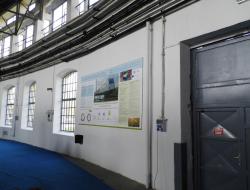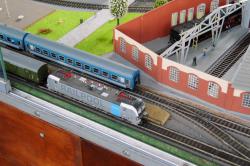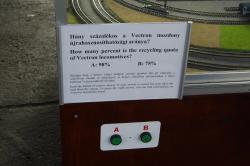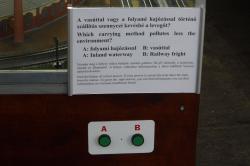How to do it step by step
1st Step:
Choosing the topic
Select a theme that fits the profile of the museum and an installation that fits this theme. In our case, it is an exhibition board hanging on the wall and an interactive plotting board. We collected data from the fields of public and freight transportation that demonstrates the clear advantages of rail transportation.
2nd Step:
Contacting the partners
Find partners to implement the installation. In our case, we cooperated with representatives of Siemens in Hungary. They helped us collect all the documents demonstrating the environmentally friendly credentials of Siemens Vectron locomotives, both in terms of their production process and their actual operation.
3rd Step:
Preparing materials
Collect the data, graphics and photos to be displayed on the board.
4th Step:
Requesting quotes
We requested quotes for the graphic design, manufacturing and transportation of the board, as well as for the installation of the plotting board.
5th Step:
Preparing the graphic design
We agreed with the graphic artist on the amount of data to be displayed on the board and we asked to see some drafts.
6th Step:
Finalizing the design and content
Correcting any errors, leaving some information out and including other information, always aiming to be as informative as possible.
7th Step:
Procurement
The interactive plotting table and two Siemens Vectron locomotive models have to be ordered.
8th Step:
Manufacturing and installation
After finalizing the graphic designs, we sent all the materials to the printers, who printed and laminated the board. Once it had been delivered to the museum, the staff installed it on the wall. In addition, the plotting table, which children can operate by pushing two buttons and answering two questions correctly, had to be installed.






















